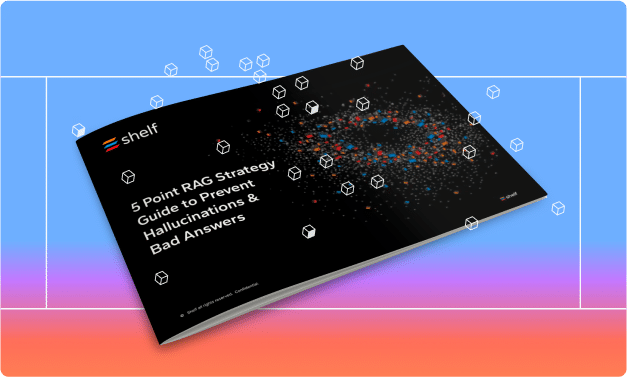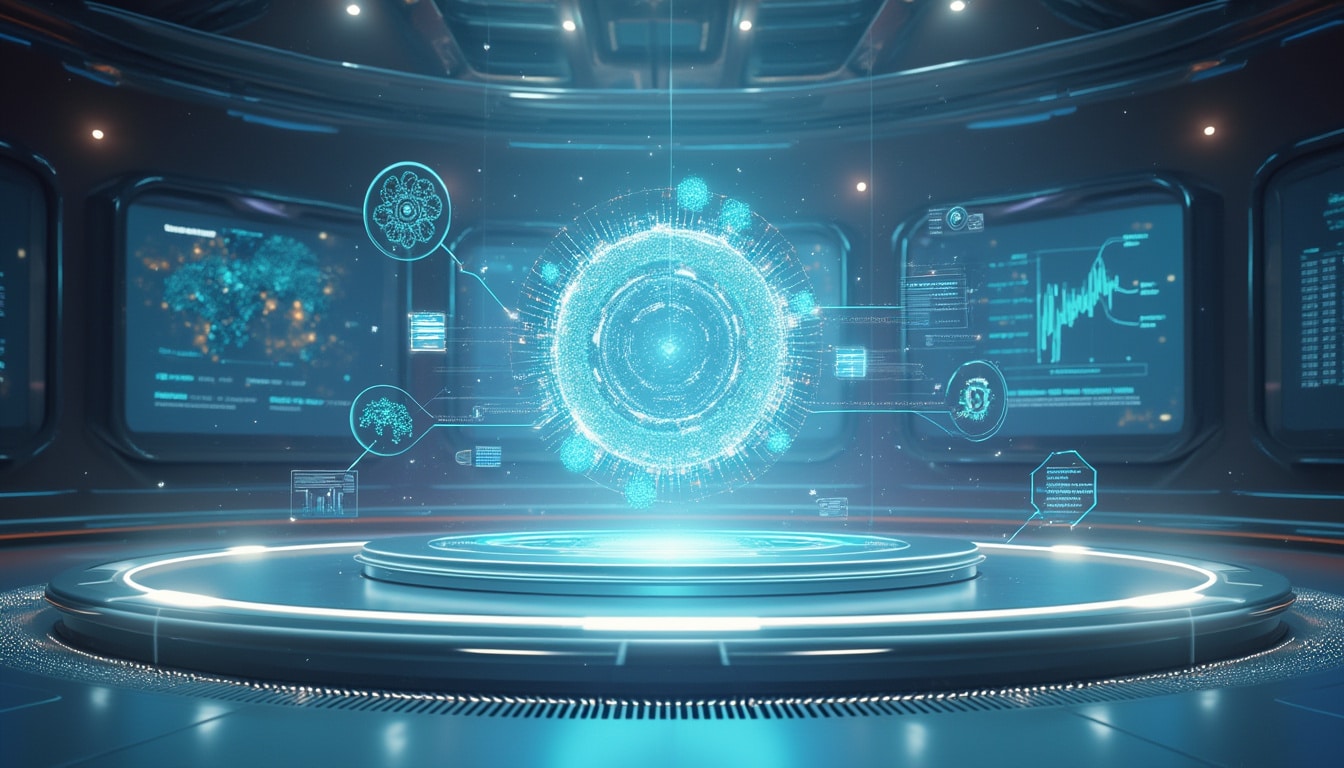Retrieval-augmented generation (RAG) is an innovative technique in natural language processing that combines the power of retrieval-based methods with the generative capabilities of large language models. By integrating real-time, relevant information from various sources into the generation process, RAG enhances the accuracy and relevance of the content it produces.
RAG integrates relevant information retrieved from specific sources, making the output more accurate and contextually rich. This approach allows you to generate content that is not only coherent but also grounded in real-world data, improving both relevance and reliability.
By combining retrieval and generation, RAG addresses some of the limitations of traditional generative models, which may generate plausible-sounding but incorrect or out-of-date information. The retrieval component ensures that the generative model has access to up-to-date and relevant information, resulting in more trustworthy and accurate outputs.
Retrieval-Augmented Generation vs. Semantic Search
Retrieval-augmented generation and semantic search both enhance information retrieval but serve different purposes.
Semantic search retrieves the most relevant documents by understanding the meaning behind a query. It goes beyond keyword matching to find semantically related information, which is ideal for quickly locating specific data from a large dataset.
Like semantic search, RAG retrieves relevant information, but it also uses that information to generate new content. While semantic search focuses on finding and presenting existing information, RAG integrates existing information into the creation of new, contextually accurate content, making it more dynamic for generative AI tasks.

History of Retrieval-Augmented Generation
The concept of RAG emerged as a response to the limitations of traditional generative models. Early language models focused solely on generating text based on patterns learned during training. However, these models often lacked the ability to access and incorporate the most current information or specific knowledge that wasn’t part of their training data.
For instance, a model could give you a list of US presidents because that information is widely available. But it cannot provide tracking information from your recent ecommerce order unless it has specific access to that information.
As NLP research evolved, the integration of retrieval mechanisms with generative models was explored. Researchers recognized the potential of leveraging vast knowledge sources, such as databases and document collections, to enhance the quality of generated text.
This led to the development of RAG, where the retrieval mechanism actively supports and augments the generation process, making it more robust and context-aware.
Where RAG Gets Its Name
The term “retrieval-augmented generation” is derived from the two core components that define this approach: retrieval and generation.
The retrieval aspect refers to the process of fetching relevant information from knowledge sources, such as documents, databases, or search engines. This information is then augmented into the generative process, where an LLM creates text that is informed and enriched by the retrieved data.
Why is Retrieval-Augmented Generation Important?
Retrieval-augmented generation addresses a key limitation of traditional generative models: the reliance on static, pre-trained data that can quickly become outdated or irrelevant. Without access to current information, generative models risk producing content that, while linguistically accurate, may not be factually correct or aligned with the latest developments.
RAG overcomes this by incorporating real-time data, ensuring that the generated content is both timely and contextually accurate.
Moreover, RAG enhances the adaptability and utility of language models across various applications. Whether you’re generating detailed reports, answering complex queries, or creating personalized content, RAG allows you to tap into a broader and more relevant knowledge base.
This capability makes RAG particularly valuable in fields that require up-to-date information or specialized knowledge, ensuring that the output remains useful and trustworthy.
The Benefits of Retrieval-Augmented Generation
Retrieval-augmented generation offers several key benefits that enhance the effectiveness and adaptability of generative models.
Enhanced Accuracy
One of the primary benefits of RAG is its ability to enhance the accuracy of generated content. By integrating real-time, relevant information, RAG ensures that the outputs are not only coherent but also factually correct. This reduces the likelihood of generating outdated or incorrect information, which is a common limitation of traditional generative models.
Improved Relevance
Retrieval-augmented generation allows you to generate content that is highly relevant to the specific context or query at hand. The retrieval component enables the model to pull in information that is directly related to the topic, making the generated content more aligned with the user’s needs or the specific task. This is particularly valuable in applications where precision and relevance are critical.
Greater Contextual Understanding
By incorporating external data into the generation process, RAG provides a deeper and more nuanced understanding of context. This leads to outputs that are not only more informed but also better suited to complex or specialized topics. The ability to augment generation with contextually rich information enhances the overall quality and usability of the content.
Increased Flexibility
Retrieval-augmented generation offers increased flexibility by allowing you to adapt the model’s outputs to a wide range of scenarios. Whether you need to generate content based on the latest data or tailor responses to specific industries or domains, RAG’s integration of retrieval processes enables the model to handle diverse and dynamic requirements effectively.
Scalability of Knowledge
With RAG, you can leverage a vast and continuously growing body of knowledge without the need to retrain the model frequently. The retrieval mechanism accesses and integrates up-to-date information from external sources, making it easier to scale the application of language models across different fields and use cases. This scalability is essential for organizations that need to maintain accuracy and relevance as their knowledge base expands.
The Challenges of Retrieval-Augmented Generation
While RAG offers significant advantages, it also presents several challenges that need to be carefully managed for effective implementation.
Integration Complexity
One of the main challenges of implementing RAG is the complexity involved in integrating retrieval mechanisms with generative models. Combining these two processes requires sophisticated architecture and careful tuning. This integration demands expertise in both retrieval systems and natural language processing.
Dependency on External Data Quality
Retrieval-augmented generation’s effectiveness heavily relies on the quality and reliability of the external data sources it retrieves from. If the data is inaccurate, outdated, or biased, the generated content will reflect these issues, potentially leading to misleading or incorrect outputs. Ensuring that retrieval sources are trustworthy and up-to-date is essential but can be challenging to manage.
Latency and Performance
The retrieval process in RAG can introduce latency, especially when accessing large or complex data sources. This delay can affect the performance and responsiveness of the system, particularly in real-time applications where speed is critical. Balancing the need for thorough retrieval with the demand for quick generation remains a significant technical hurdle.
Complexity in Training and Maintenance
Training a RAG model involves more complexity than traditional generative models, as it requires fine-tuning both the retrieval and generation components. Maintaining and updating the model to keep up with evolving data sources and ensuring the retrieval process remains effective over time adds to the operational burden. This can make RAG more challenging to deploy and maintain, especially for organizations with limited resources.
Ensuring Consistency in Outputs
With RAG, there is a challenge in ensuring consistency across outputs, particularly when dealing with dynamic or frequently changing data sources. The retrieval process might pull in varying pieces of information each time, leading to inconsistencies in the generated content. This can complicate efforts to produce standardized or uniform outputs, which may be necessary in certain applications.
How Retrieval-Augmented Generation Works
Retrieval-augmented generation operates by combining two key processes: retrieving relevant information from external sources and generating text based on that information. Here’s how it works:
Retrieval Process
When a query or prompt is provided, the RAG model first initiates a retrieval process. The model begins by searching through a variety of data sources, such as databases, online documents, knowledge bases, or internal company resources, to locate information that is relevant to the query.
The retrieval mechanism typically employs advanced techniques like keyword matching, semantic search, or vector-based similarity. Keyword matching looks for direct matches with the words in the query, while semantic search goes a step further by understanding the meaning behind the words to find information that is conceptually related, even if the exact terms don’t appear in the data.
Vector-based similarity uses mathematical representations of the query and the documents to find the closest matches, enabling the model to retrieve data that is not just relevant but also highly context-specific.
Data Augmentation
Once the relevant information is retrieved, it is passed on to the generative model. This step, known as data augmentation, involves integrating the retrieved data into the generative process. The retrieved content serves as a reference point or grounding data, guiding the generative model to produce text that is informed by accurate, real-world information.
Data augmentation ensures that the generative model doesn’t operate in isolation but is instead directly influenced by the retrieved content. This makes the generated output not only more accurate but also richer in context. The model uses this augmented information to craft responses that are aligned with the latest data, ensuring that the output is factually correct and contextually appropriate.
This step is particularly important in applications where the information is constantly evolving, such as news generation, customer support, or research summaries.
Text Generation
With the retrieved and augmented information at hand, the generative model moves on to create the final output. This text generation phase is where the model synthesizes the information it has gathered, integrating it into a coherent and fluid narrative that directly addresses the original query or prompt.
The generative model leverages the context provided by the retrieval step to ensure that the text it produces is not only linguistically sophisticated but also highly relevant to the user’s needs. The model’s ability to blend retrieved data with its generative capabilities allows it to produce content that is both creative and grounded in factual information.
This synthesis results in output that is more than just a regurgitation of facts; it’s a meaningful and context-aware response that adds value to the user’s query.
Use Cases
Retrieval-augmented generation is versatile, with a range of use cases that demonstrate its ability to generate accurate, relevant, and contextually rich content across various industries.
1. Content Creation and Personalization
Retrieval-augmented generation is highly effective in generating personalized content for users. By retrieving relevant information based on user preferences or specific queries, RAG can create customized articles, reports, or recommendations that are tailored to individual needs.
This makes it particularly valuable in industries like marketing, e-commerce, and media, where personalization drives engagement and customer satisfaction.
2. Enhanced Customer Support
In customer support, RAG can improve the quality of automated responses. By retrieving accurate and up-to-date information from knowledge bases, RAG enables chatbots or virtual assistants to provide more precise and contextually relevant answers to customer inquiries. This enhances the user experience and reduces the need for human intervention.
3. Research and Knowledge Discovery
For researchers and knowledge workers, RAG can accelerate the discovery process by generating summaries or insights based on the latest research articles, technical papers, or internal documents.
By retrieving and synthesizing information from multiple sources, RAG helps users quickly access the most relevant and current data, making it easier to stay informed and make data-driven decisions.
4. Education and Training
In educational settings, RAG can be used to create dynamic learning materials that are customized for different learners. By retrieving content from textbooks, research papers, or online resources, RAG can generate tailored study guides, quizzes, or tutorials that address specific learning objectives. This enhances the effectiveness of educational programs by providing learners with materials that are directly relevant to their needs.
5. Legal and Compliance Reporting
In the legal and compliance sectors, RAG can assist in generating reports that are both accurate and up-to-date. By retrieving relevant legal texts, regulations, and case law, RAG can produce comprehensive summaries or analysis that help legal professionals stay compliant and informed. This use case is valuable in environments where staying current with regulatory changes is critical.
The Future of Retrieval-Augmented Generation
Retrieval-augmented generation has revolutionized the way we interact with and generate content. As this technique matures, we can expect significant improvements in its efficiency, accuracy, and versatility, making it an even more powerful tool across various domains.
Retrieval mechanisms: Future RAG models will likely benefit from more sophisticated retrieval algorithms that can access and process vast amounts of data in real-time with minimal latency. These advancements will enable RAG to pull in even more relevant, diverse, and up-to-date information. This will be particularly impactful in fields that require rapid access to the latest information, such as finance, healthcare, and law.
Specialized knowledge bases: As organizations build and maintain more comprehensive and domain-specific data repositories, RAG models will be able to generate content that is not only accurate but also deeply informed by niche expertise. This could lead to highly customized solutions in industries such as personalized medicine, targeted marketing, and legal research, where specialized knowledge is paramount.
Integration: Seamless integration with other AI systems such as reinforcement learning and multi-agent systems would allow RAG models to continuously improve their performance by learning from interactions and feedback, making them more adaptive and responsive to user needs. By collaborating with other AI agents, RAG could handle more complex tasks that require a combination of retrieval, reasoning, and decision-making.
User interaction: Future RAG models will likely become more intuitive and user-friendly, offering more natural and conversational interfaces. As these models become more adept at understanding context and user intent, they will provide increasingly relevant and personalized content, further enhancing user satisfaction and engagement.
Rich AI Content with Retrieval-Augmented Generation
Retrieval-augmented generation represents a significant advancement in the field of natural language processing, merging the strengths of retrieval-based methods with the generative power of large language models. This innovative approach enhances the accuracy, relevance, and contextual richness of generated content.
The future of RAG holds exciting possibilities, with ongoing advancements likely to expand its applications and improve its performance. As this technology matures, RAG will undoubtedly play a key role in shaping the future of AI-driven content creation.




